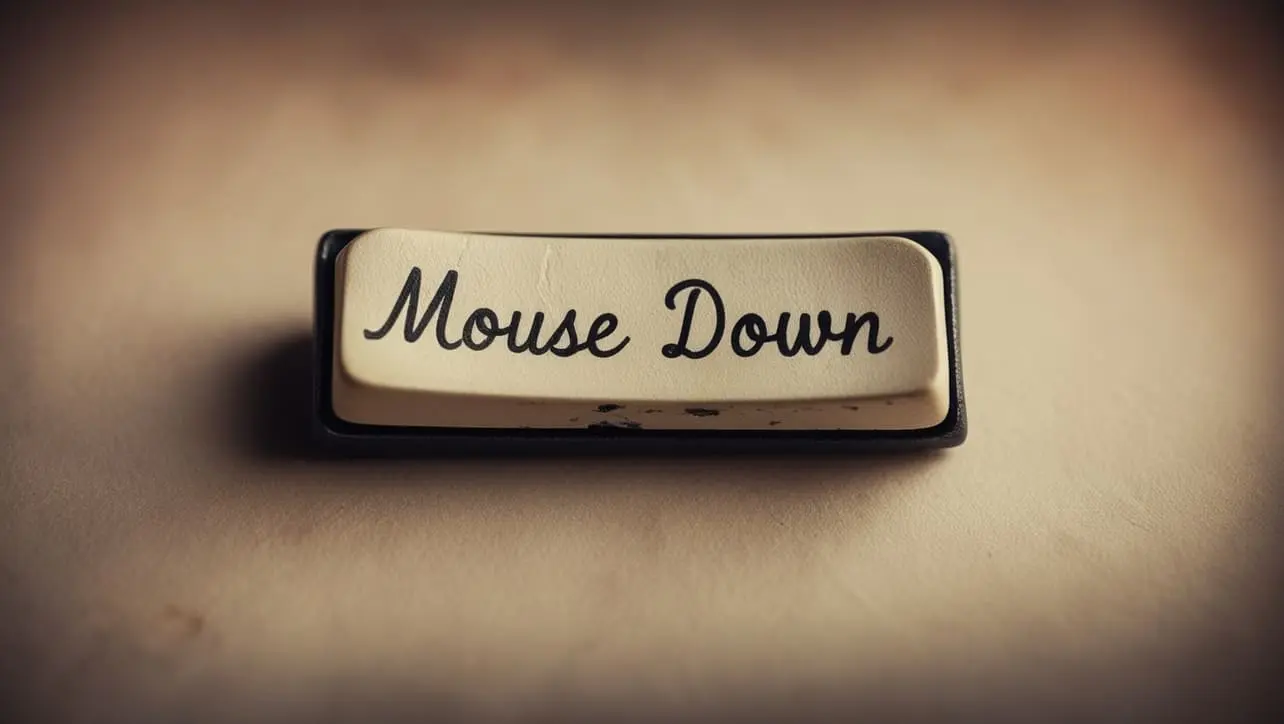
jQuery Topics
- jQuery Introduction
- jQuery Callbacks
- jQuery deferred
- jQuery selectors
- jQuery Ajax Events
- jQuery Ajax Methods
- jQuery Keyboard Events
- jQuery Keyboard Methods
- jQuery Form Events
- jQuery Form Methods
- jQuery Mouse Events
- jQuery Mouse Methods
- jQuery Event Properties
- jQuery Event Methods
- jQuery HTML
- jQuery CSS
- jQuery Fading
- jQuery Traversing
- jQuery Utilities
- jQuery Properties
jQuery mousedown Event

Photo Credit to CodeToFun
🙋 Introduction
The jQuery library offers a multitude of event-handling methods to enhance interactivity in web development. Among these is the mousedown event, which triggers when a mouse button is pressed down over an element. Although the .mousedown() method is deprecated, jQuery provides the .on() method as a replacement.
In this guide, we'll explore the usage of the jQuery mousedown event with the .on() method, providing examples to illustrate its functionality.
🧠 Understanding mousedown Event
The mousedown event occurs when a mouse button is pressed down while the pointer is over an element. This event is useful for implementing actions that should occur when a user initiates a click or a drag operation.
💡 Syntax
The syntax for the mousedown event is straightforward:
.on("mousedown", [, eventData ], handler)Parameters:
- mousedown: Specifies the event type.
- [eventData] (optional): Additional data to pass along to the event handler.
- handler: A function to execute when the event is triggered.
📝 Example
Basic Usage:
Suppose you have a button and you want to trigger an alert when the mouse button is pressed down over it. You can achieve this using the .on() method with the
mousedownevent:index.htmlCopied<button id="myButton">Click me</button>example.jsCopied$("#myButton").on("mousedown", function() { alert("Mouse button pressed down!"); });This will display an alert when the mouse button is pressed down over the button with the ID myButton.
Dragging Elements:
The
mousedownevent is commonly used to initiate drag operations. For example, let's create a draggable element:index.htmlCopied<div id="draggableElement" style="width: 100px; height: 100px; background-color: #ccc;"></div>example.jsCopied$("#draggableElement").on("mousedown", function(event) { var offsetX = event.offsetX; var offsetY = event.offsetY; $(document).on("mousemove", function(event) { var newX = event.clientX - offsetX; var newY = event.clientY - offsetY; $("#draggableElement").css({ "left": newX, "top": newY }); }); $(document).on("mouseup", function() { $(document).off("mousemove"); }); });This code makes the draggableElement draggable within the document by tracking mouse movements.
🎉 Conclusion
The jQuery mousedown event, though deprecated in favor of the .on() method, remains a vital tool for implementing interactive features such as click actions and drag operations on web pages.
By utilizing the .on() method with the mousedown event, you can enhance user experience and add dynamic functionality to your web applications effectively.
👨💻 Join our Community:
Author

For over eight years, I worked as a full-stack web developer. Now, I have chosen my profession as a full-time blogger at codetofun.com.
Buy me a coffee to make codetofun.com free for everyone.
Buy me a Coffee












If you have any doubts regarding this article (jQuery mousedown Event), please comment here. I will help you immediately.